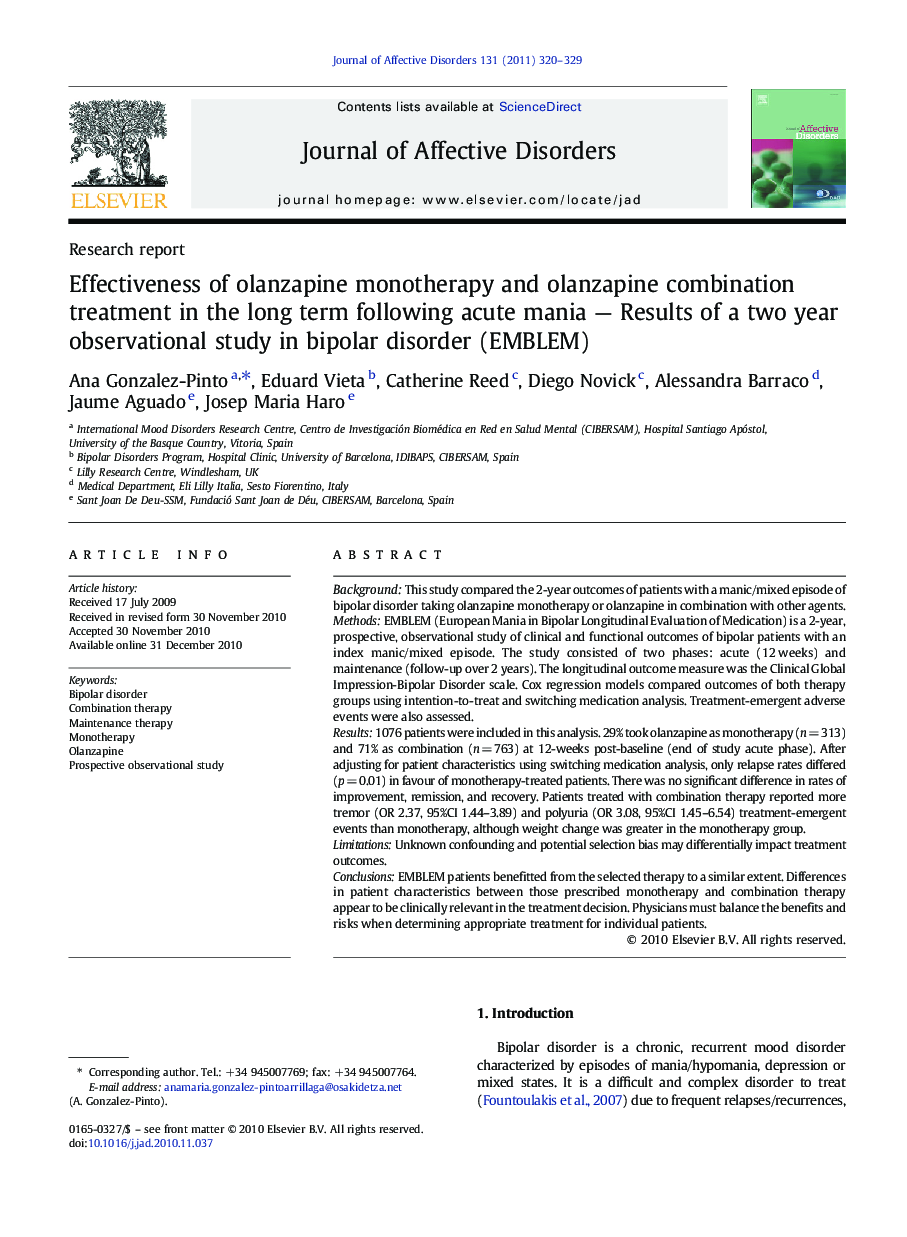| کد مقاله | کد نشریه | سال انتشار | مقاله انگلیسی | نسخه تمام متن |
|---|---|---|---|---|
| 6235801 | 1608188 | 2011 | 10 صفحه PDF | دانلود رایگان |

BackgroundThis study compared the 2-year outcomes of patients with a manic/mixed episode of bipolar disorder taking olanzapine monotherapy or olanzapine in combination with other agents.MethodsEMBLEM (European Mania in Bipolar Longitudinal Evaluation of Medication) is a 2-year, prospective, observational study of clinical and functional outcomes of bipolar patients with an index manic/mixed episode. The study consisted of two phases: acute (12 weeks) and maintenance (follow-up over 2 years). The longitudinal outcome measure was the Clinical Global Impression-Bipolar Disorder scale. Cox regression models compared outcomes of both therapy groups using intention-to-treat and switching medication analysis. Treatment-emergent adverse events were also assessed.Results1076 patients were included in this analysis. 29% took olanzapine as monotherapy (n = 313) and 71% as combination (n = 763) at 12-weeks post-baseline (end of study acute phase). After adjusting for patient characteristics using switching medication analysis, only relapse rates differed (p = 0.01) in favour of monotherapy-treated patients. There was no significant difference in rates of improvement, remission, and recovery. Patients treated with combination therapy reported more tremor (OR 2.37, 95%CI 1.44-3.89) and polyuria (OR 3.08, 95%CI 1.45-6.54) treatment-emergent events than monotherapy, although weight change was greater in the monotherapy group.LimitationsUnknown confounding and potential selection bias may differentially impact treatment outcomes.ConclusionsEMBLEM patients benefitted from the selected therapy to a similar extent. Differences in patient characteristics between those prescribed monotherapy and combination therapy appear to be clinically relevant in the treatment decision. Physicians must balance the benefits and risks when determining appropriate treatment for individual patients.
Journal: Journal of Affective Disorders - Volume 131, Issues 1â3, June 2011, Pages 320-329